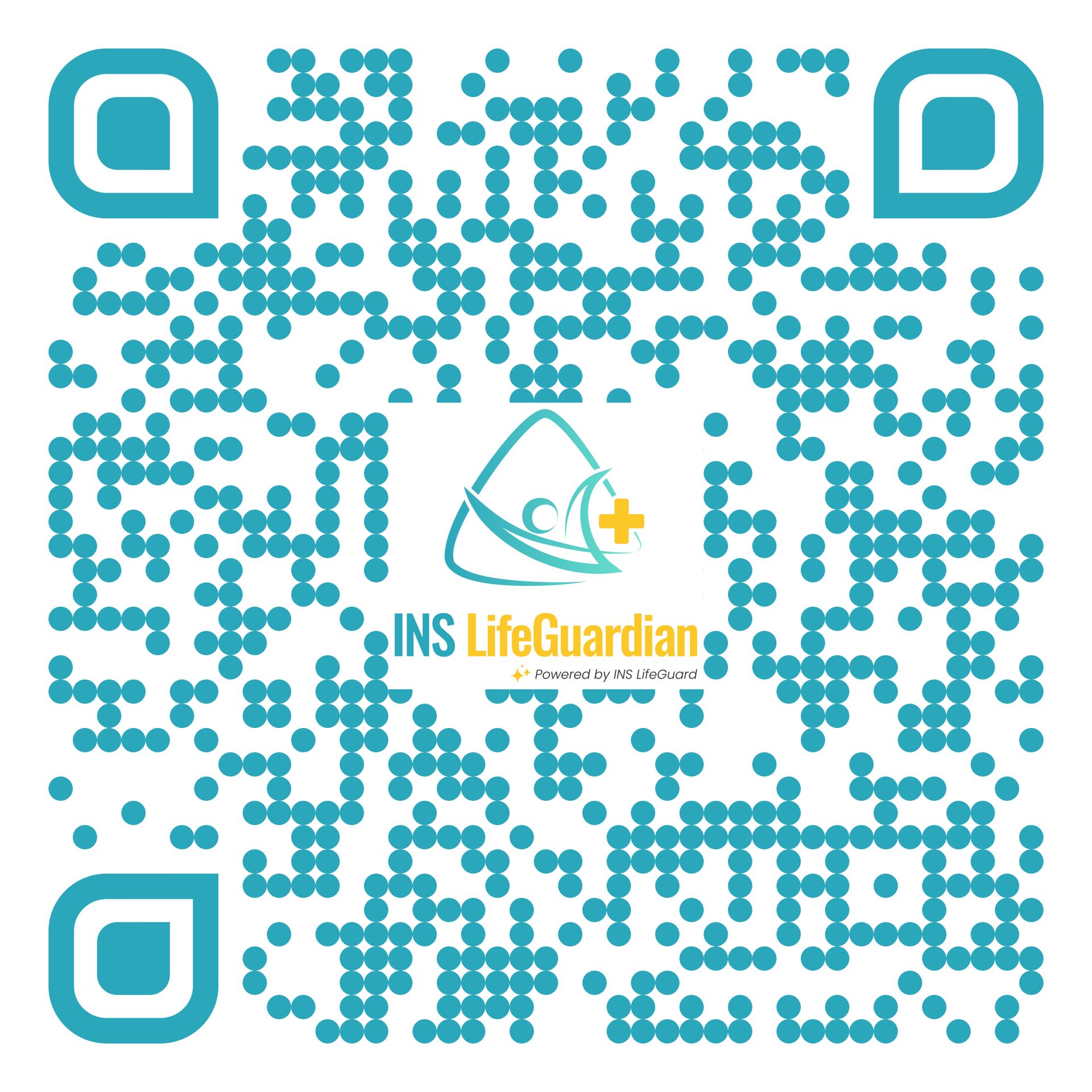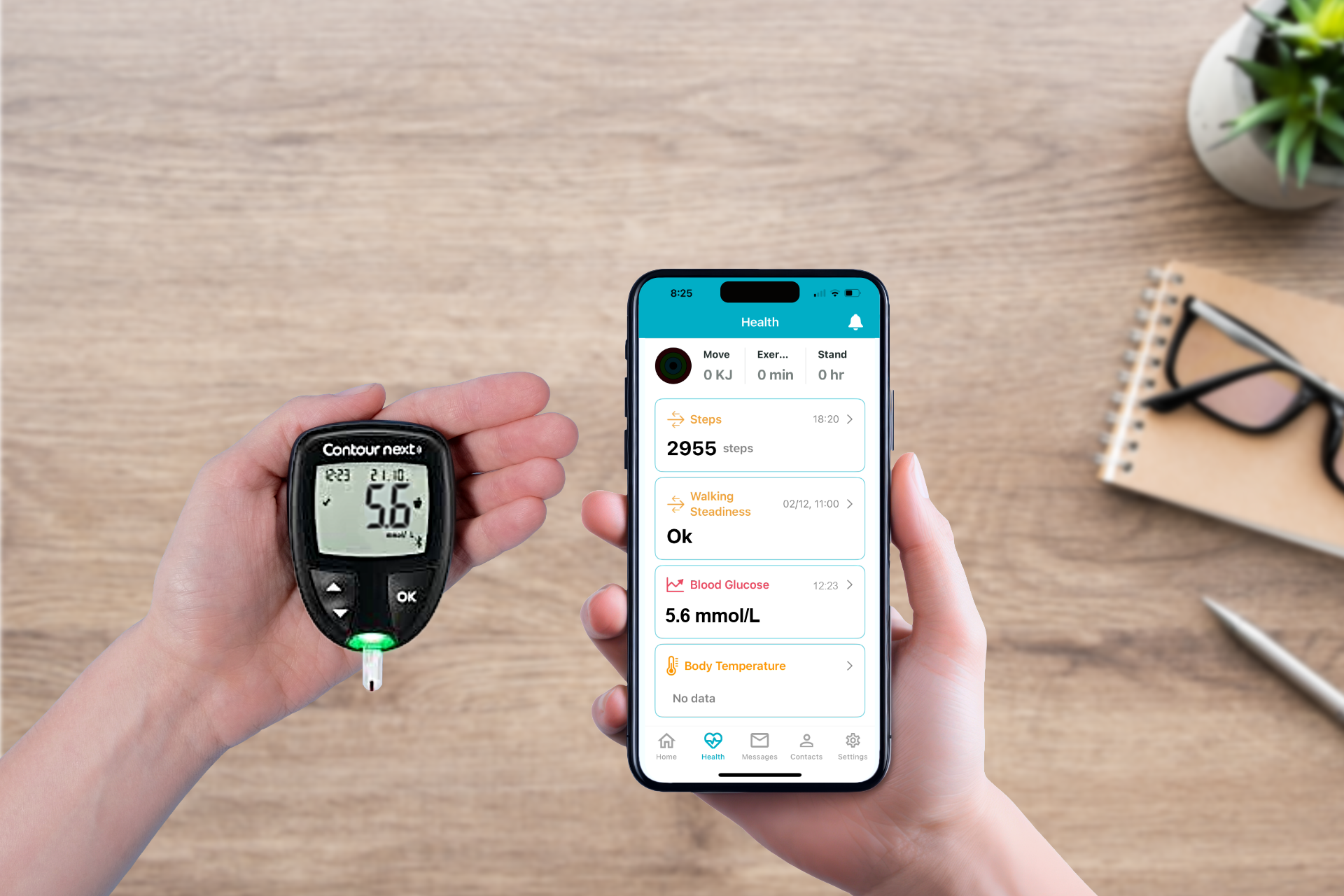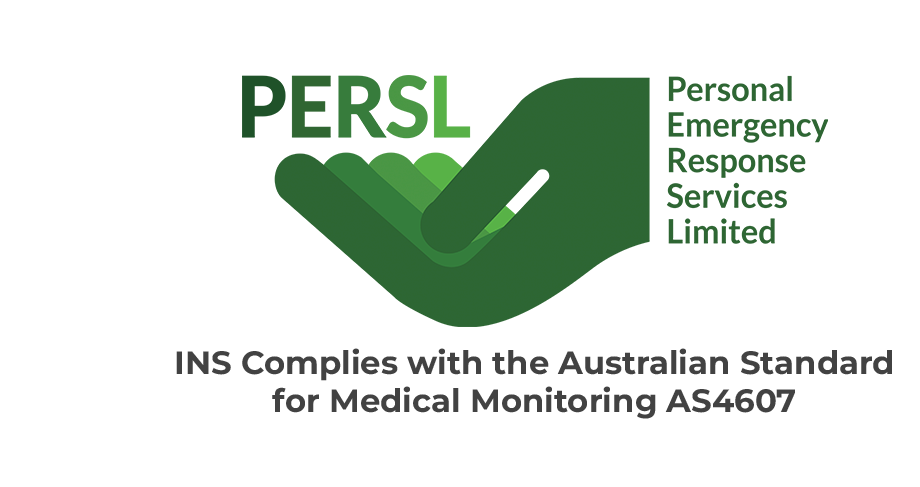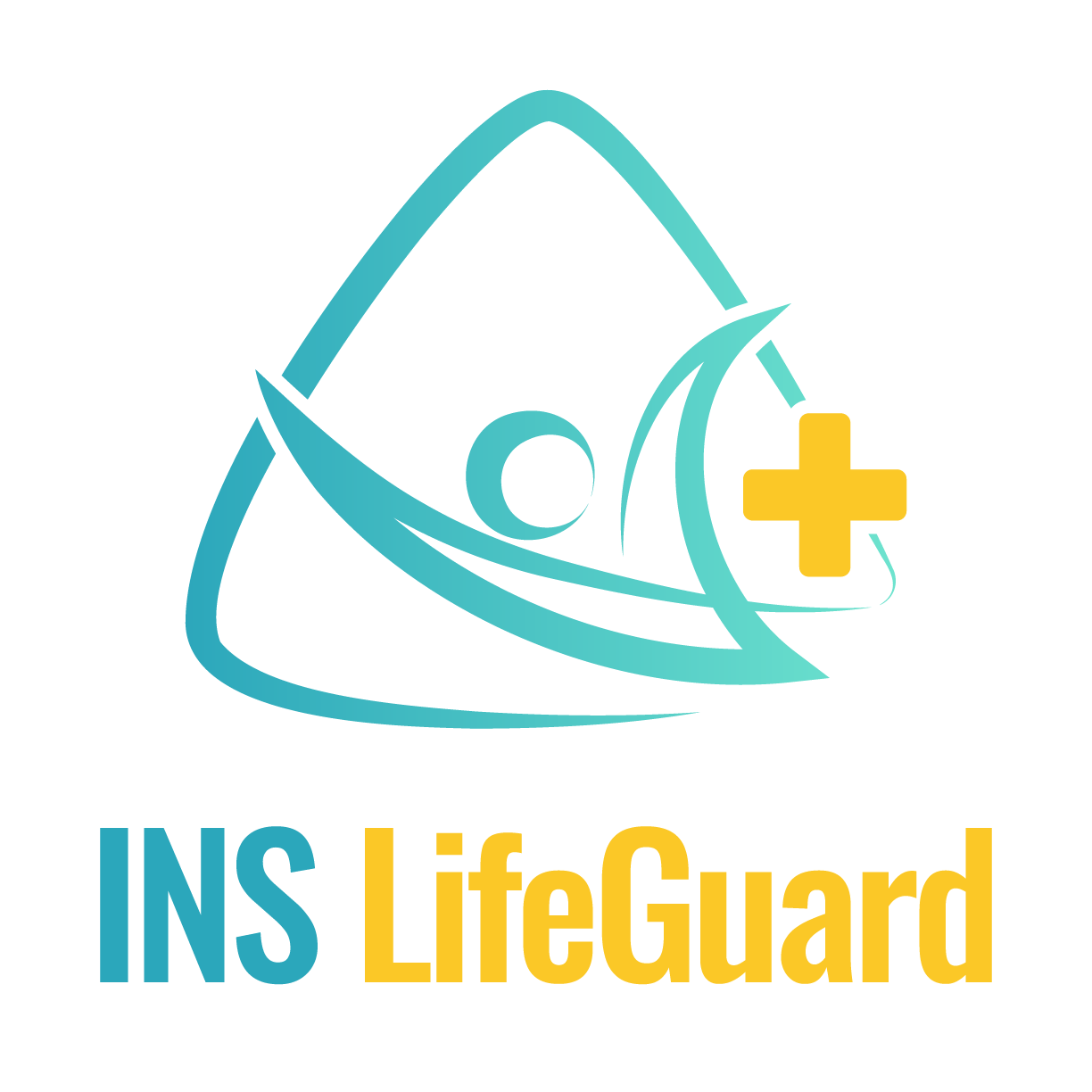Have a Question?
Why Temperature Monitoring Matters: From Fever Detection to Long-Term Health Insights
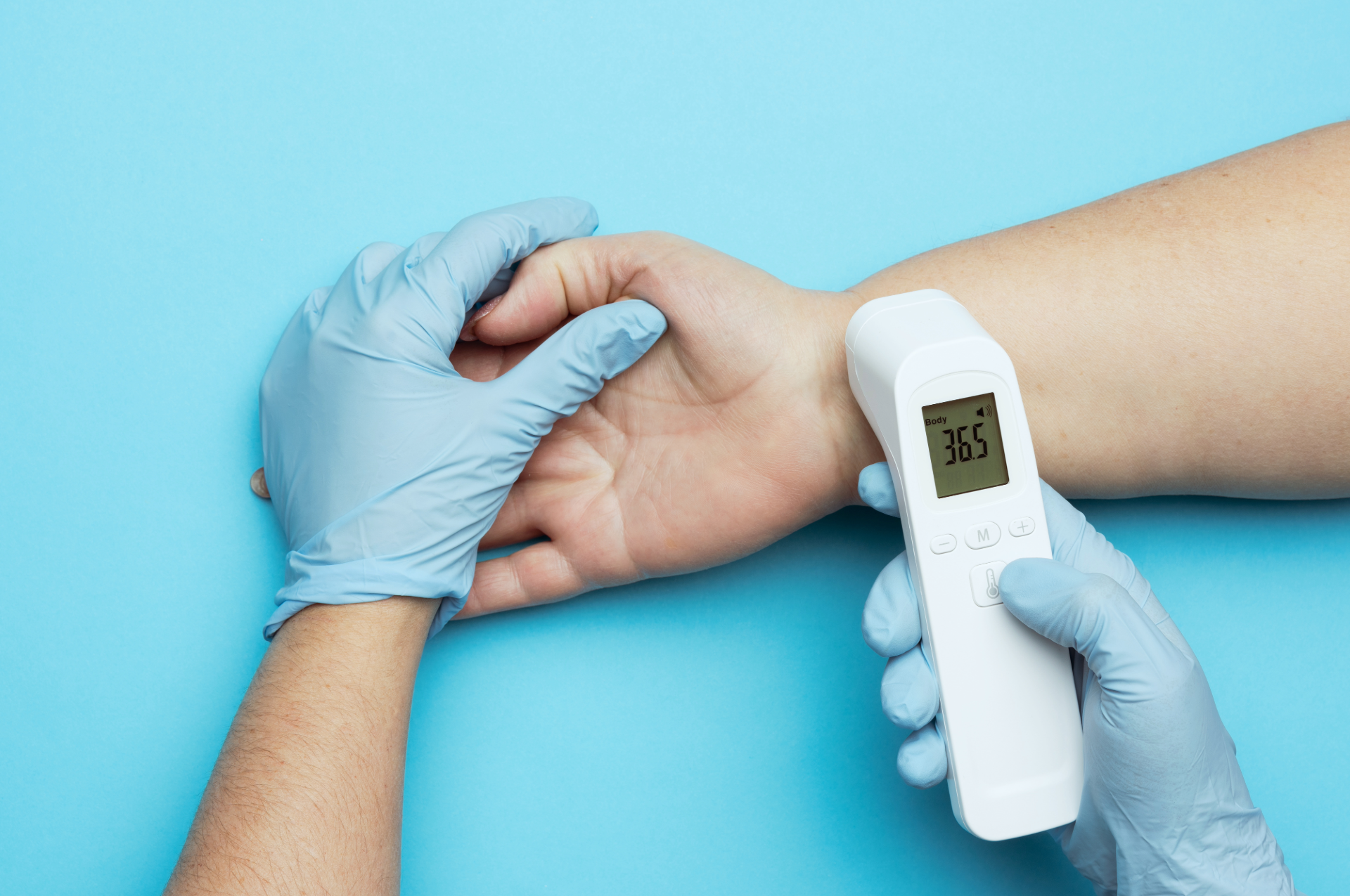
At INS LifeGuard, we believe in the power of proactive health monitoring. Body temperature is one of the body’s vital signs, and fluctuations can provide early warning of illness, infection, or underlying health changes. With new wearable technology, like wrist temperature tracking available through Apple Health-compatible Apple watches, combined with nurse oversight through the INS LifeGuardian® app, Australians now have more ways than ever to keep an eye on this important health measure.
What is Body Temperature and Why Do We Measure It?
Body temperature reflects how well the body can generate and release heat. Measuring it helps detect changes in health that may require rest, medical care, or emergency intervention.
- Normal ranges:
Adults typically sit between 36.5–37.5°C (97.7–99.5°F).
- Fever: A temperature of 38°C (100.4°F) or higher usually indicates fever.
- Low temperature: Below 36°C can be a concern, particularly in seniors, infants, or those exposed to cold.
How Body Temperature is Measured
Note that readings can differ depending on the method:
- Rectal temperatures: ~1ºC higher than oral readings
- Tympanic (ear): 0.3–0.6°C higher
- Axillary (underarm): ~1ºC lower
- Forehead (infrared): 0.3–0.6°C lower
Understanding this helps ensure readings are interpreted correctly.
Why Temperatures Change
A person’s temperature can fluctuate for many reasons, including:
- Age –
Seniors may struggle to conserve heat; babies have less effective regulation, so ranges vary more widely.
- Menstrual cycle –
Hormonal changes cause rises during ovulation.
- Time of day – Lowest at dawn, highest in late afternoon.
- Physical activity – Exercise generates extra heat.
- Food and fluids –
Digestion can raise body temperature slightly.
- Stress – Triggers adrenaline, which can elevate temperature.
- Pregnancy – Increased metabolism and hormones raise baseline readings.
When to Check Temperature
- If someone seems unwell (fatigue, chills, sweating, irritability).
- When an infection is suspected.
- After exposure to extreme heat or cold.
- In chronic conditions where fever is a common complication.
When caring for vulnerable groups (infants, elderly, immunocompromised).
Temperature Across the Ages
Babies (0–3 months)
- Any fever ≥ 38°C is a medical emergency.
- Go to the nearest emergency department immediately.
Children
- Normal: 36.5–38°C.
- Fever > 39°C or fever with other symptoms (stiff neck, rash, dehydration, difficulty breathing) requires urgent care.
Adolescents
- Same fever thresholds as children.
- Consider lifestyle factors like stress, hormones, and activity when interpreting readings.
Adults
- Fever ≥ 38°C is concerning, especially with symptoms such as chest pain, breathing issues, or persistent headache.
- Persistent fever > 3 days needs a doctor’s review.
Seniors
- More vulnerable to both high and low temperatures.
- Infections may cause only a slight temperature rise, even a mild fever should be taken seriously.
Download Your Free Handy Temperature Guide for Parents and Carers
Our one-page Temperature Monitoring Quick Guide is designed for parents and carers and includes the key information you need when someone in your care feels unwell, including:
- Normal temperature ranges for adults, children, and infants
- Warning signs
that mean you should seek urgent medical help
- At-home care tips to keep your loved ones comfortable and safe
Print it, pin it to the fridge, and have peace of mind knowing clear guidance is always close at hand.
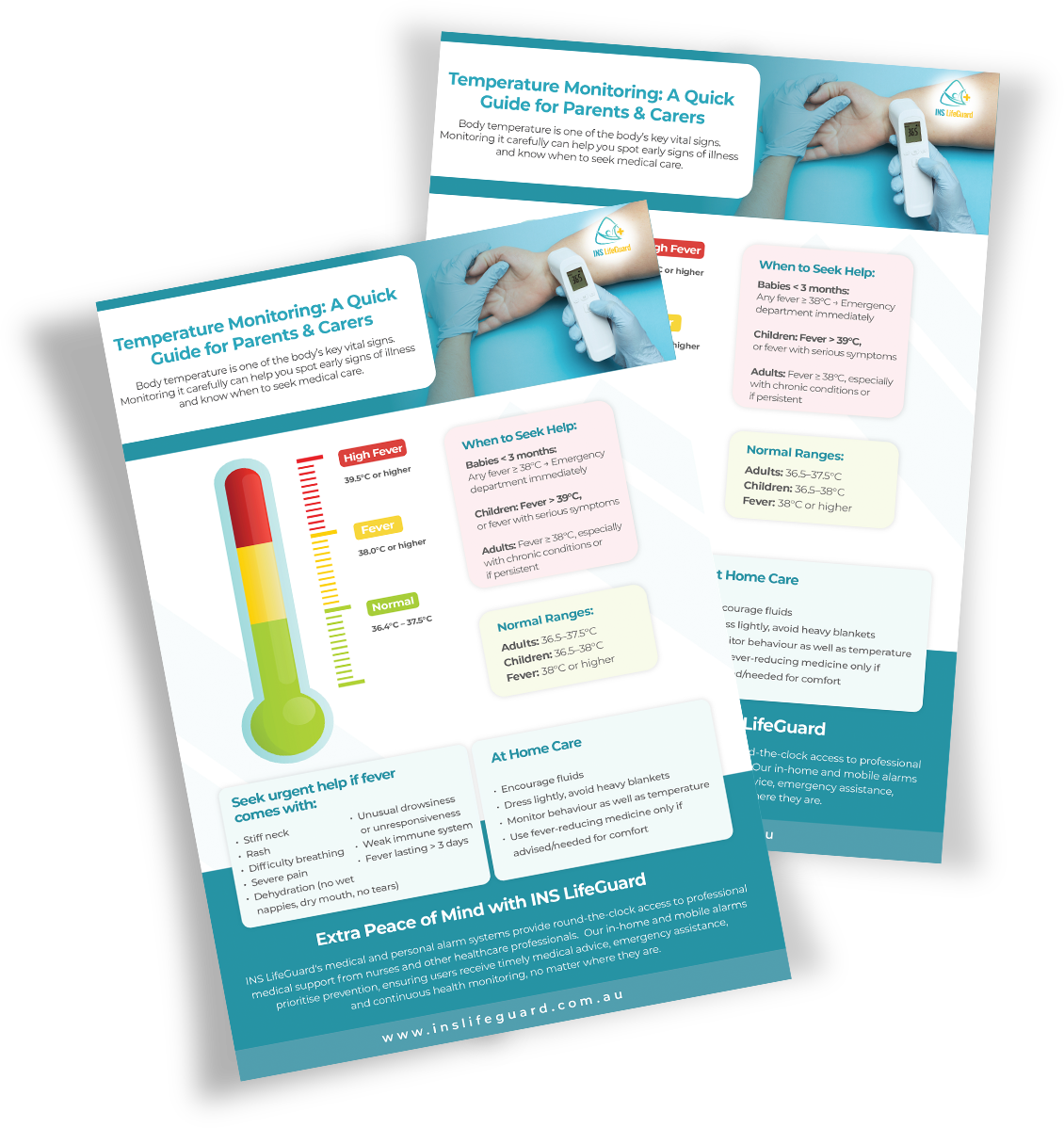
Wrist Temperature: The Future of Health Monitoring
Traditionally, temperature was only measured when illness was suspected. Now, continuous wrist temperature monitoring via smartwatches allows us to track daily rhythms and long-term patterns.
A recent study
(Perelman School of Medicine, 2023) found:
- Flattened wrist temperature rhythms (less variation between day and night) were linked to
increased risk of chronic diseases, including:
- Nonalcoholic fatty liver disease (91% increased risk)
- Type 2 diabetes (69%)
- Kidney failure (25%)
- Hypertension (23%)
- Pneumonia (22%)
- Up to 73 different conditions were associated with reduced temperature rhythm amplitude.
This shows that wrist temperature is more than just a fever detector; it may act as a digital biomarker for long-term health risk.
How INS LifeGuardian® Body Temperature App Supports You
The INS LifeGuardian® app makes temperature monitoring practical and safe:
- Manual logging:
Enter thermometer readings into the app.
- Automatic syncing: Capture wrist temperature trends from Apple Health-compatible devices.
- Follow-up alerts:
Out-of-range results trigger an option to speak to a nurse, who can offer guidance and recommend next steps.
- Nurse oversight: Our qualified nurses review readings and trends.
This combination of technology and clinical expertise ensures small issues are caught early, helping prevent emergencies and reduce unnecessary hospital visits.
Conclusion
Monitoring body temperature is a simple yet powerful way to protect your health. From detecting fevers to identifying long-term risk patterns, it’s an important safeguard for people of all ages.
With INS LifeGuardian®, your temperature data doesn’t just sit on a device; it’s reviewed by qualified nurses, available 24/7, as part of our premium health and safety monitoring.
Download INS LifeGuardian® today and experience the difference.
Or call 1800 636 040 to learn more.

About
INS LifeGuard is the only 24/7 nurse on-call personal and medical monitoring in Australia. We provide monitoring technology for both in the home and on the go and can also monitor other provider's equipment. Our services are suitable for anyone wanting support to stay independent such as the elderly, those with medical conditions and disabilities plus enhancing safety and security for lone workers.




